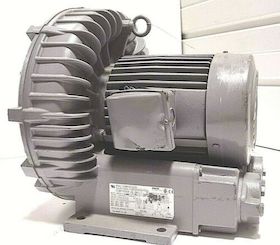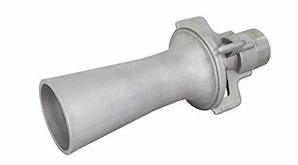
-----
Eductor agitation benefits
Q. I have recently evaluated an eductor agitation system on an alkaline cleaning tank and have found good savings on consumable usage. However, I am struggling to quantify heat savings and the effect that the previous air agitation system had on the tank temperature. I am also interested in any figures on the cost of supplying compressed air for agitation purposes so that I can calculate the savings realised by the eductor system.
Any help at all would be gratefully received.
Rolls-Royce Aero Engines Services - Derby , United Kingdom
1998
A. This is an interesting question. I am not a mathematician, however if I remember my Chem. E. properly, one ought to be able to calculate the delta T for convection heat transfer from a liquid to a gas using the Nusselt correlation to estimate the heat transfer coefficient. Also, Form R calculations for emissions from open top dip tanks may help. Compressed air is the worst way to agitate plating tanks from a quality perspective so the calculations for compressed air versus an eductor flow from pumped solution may be academic. Blown air from a regenerative blower is normally the preferred route for air agitation however, typically alkaline cleaning tanks do not have any agitation. In terms of performing the calculations the energy cost of compressed air versus pumping fluids ought to be calculated from any chemical engineering reference manual.The last time I purchased a regenerative blower, the manufacturer had a financial comparison to air compressor costs. Hope that gives you some ideas.
Ward Barcafer, CEFaerospace - Wichita, Kansas
A. Water and plating solutions are incompressible whereas air is highly compressible. There is a large energy inefficiency in pumping any compressible fluid like air because the compression process generates a lot of waste heat--the higher the pressure, the worse. While I believe in calculation rather than guesswork, when there is a clear qualitative difference, I'm not so sure that calculating the quantitative difference is worth the effort.

Ted Mooney, P.E.
Striving to live Aloha
finishing.com - Pine Beach, New Jersey
Ted can be retained for immediate
answers or long term project help
A. Agitation using air will definitely cause a lot more evaporation due to the nature of the process - air bubbles saturated with vapor continuously bubbling their way up to solution level and releasing their vapor content into the atmosphere. Evaporation is the main source for energy losses from any liquid tank and surface area is the main parameter that goes into the calculation. When comparing two tanks with the same volume (assuming solution temperature, air speed, ambient temperature, etc. is the same), the ratio between the amount of energy lost from each will be almost the same as the ratio between the surface area of each. If both tanks have the same surface area, the losses should be the same - BUT, when you agitate with air - you add the surface area of each of the bubbles to your evaporation surface area, yielding a tremendously larger heat loss than an un-agitated tank, or a tank that is agitated using a pump-eductor system. Another disadvantage to the air agitation system is the fact that it introduces contaminants to your solution, whereas you might be spending a lot of money on keeping the solution clear.
Mohamed El-SharkawyEgypt - Cairo, Egypt
2004
Q, A, or Comment on THIS thread -or- Start a NEW Thread

